FASHION
What Are Boyfriend Jeans and How to Wear Them
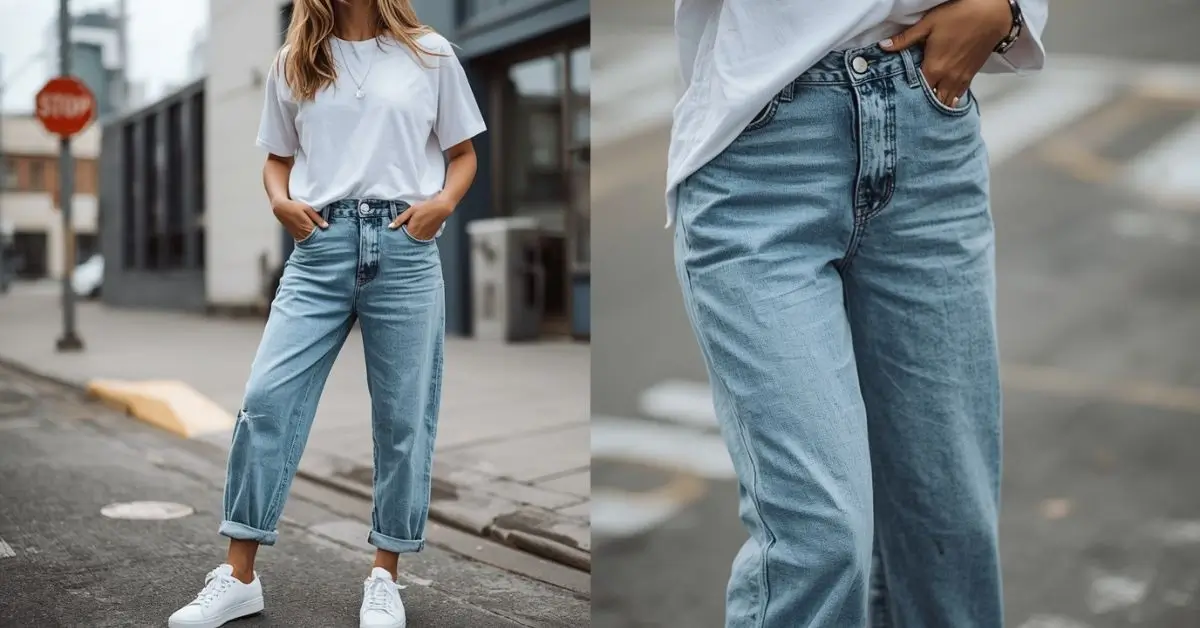
If you’ve ever scrolled through Instagram or browsed your favorite online store, you’ve likely seen the term boyfriend jeans pop up. But what are boyfriend jeans exactly? For fashion enthusiasts, casual wear shoppers, or teens discovering denim trends, this relaxed yet stylish fit has become a wardrobe staple. Whether you’re comparing them to skinny, mom, or straight-leg jeans, understanding the cut, comfort, and styling options of boyfriend jeans will help you decide if they’re the right addition to your closet.
What Are Boyfriend Jeans and Why Are They Called That?
The name boyfriend jeans comes from the idea that they look like a pair of jeans you borrowed from your boyfriend—slightly loose, relaxed, and casual. Unlike skinny jeans that hug the legs, boyfriend jeans have a slouchy fit, often sitting low on the hips with a straight or slightly tapered leg.
- Relaxed fit women’s jeans → Perfect for comfort without losing style.
- Casual denim trends → Designed to give off an effortless, laid-back vibe.
- Boyfriend cut jeans fashion → Popular across all age groups, from teens to adults.
Boyfriend Jeans vs Other Denim Fits
Boyfriend Jeans vs Mom Jeans
- Mom jeans → High-waisted, slightly tapered, often vintage-inspired.
- Boyfriend jeans → Lower rise, looser fit, more relaxed overall.
- Takeaway: Mom jeans highlight the waist, boyfriend jeans focus on comfort.
Boyfriend Jeans vs Skinny Jeans
- Skinny jeans → Form-fitting, body-hugging, flexible stretch denim.
- Boyfriend jeans → Baggy denim for women, structured, and easygoing.
- Takeaway: If you want freedom of movement, boyfriend jeans win.
Boyfriend Jeans vs Straight-Leg Jeans
- Straight-leg jeans → Consistent width from hip to ankle.
- Boyfriend jeans → More slouch and looseness in the thigh area.
- Takeaway: Straight-leg is structured, boyfriend is relaxed.
Quick Comparison Table
| Fit Type | Waist Rise | Leg Shape | Overall Look | Best For |
|---|---|---|---|---|
| Skinny Jeans | Low–High | Tapered | Sleek, fitted | Dressy/casual |
| Mom Jeans | High | Slight taper | Vintage chic | Everyday retro |
| Straight Leg | Mid–High | Straight | Balanced | Classic style |
| Boyfriend Jeans | Mid–Low | Relaxed | Effortless | Casual comfort |
How to Wear Boyfriend Jeans: Styling Tips
Boyfriend jeans are incredibly versatile. They can be dressed up with heels or kept casual with sneakers. Here’s a quick boyfriend jeans style guide:
Best Shoes to Pair with Boyfriend Jeans
The right footwear can transform the entire vibe:
- Sneakers → For casual, everyday style.
- Heels or wedges → To add height and polish.
- Boots → Great for colder seasons and edgy outfits.
- Flats or loafers → For a smart-casual appearance.
Are Boyfriend Jeans Still in Style in 2025?
Yes—boyfriend jeans remain timeless. While denim trends cycle through skinny, wide-leg, and straight cuts, the relaxed fit women’s jeans category continues to thrive. Influencers and brands like Levi’s, Zara, and H\&M still showcase boyfriend cuts as part of their collections.
According to Vogue and Harper’s Bazaar, oversized and comfortable denim is making a strong comeback as fashion leans toward effortless chic and sustainable wear.
Expert Insights & References
- Vogue – “The return of relaxed denim fits in 2025.”
- Harper’s Bazaar – “How to style baggy jeans without losing sophistication.”
- Levi’s Official Blog – Guides on denim fits and styling boyfriend jeans.
FAQ’s
What does “sorry what” mean online?
Oops—wrong keyword. (let’s keep to boyfriend jeans only!)
What are boyfriend jeans and why are they called that?
They resemble jeans borrowed from a boyfriend—loose, relaxed, and casual.
How do boyfriend jeans fit compared to skinny jeans?
They’re looser, less body-hugging, and focus on comfort.
Are boyfriend jeans flattering for all body types?
Yes, they suit most body types when styled correctly, especially with fitted tops or statement shoes.
What shoes go best with boyfriend jeans?
Sneakers for casual wear, heels for dressy looks, and boots for edgy outfits.
Can older women wear boyfriend jeans fashionably?
Absolutely—pair them with tailored tops, blazers, and elegant footwear for a polished look.
How to style ripped boyfriend jeans for women?
Combine them with a simple tee, leather jacket, or oversized cardigan.
Are boyfriend jeans still in style in 2025?
Yes, they remain a key piece in casual denim trends.
Conclusion
So, what are boyfriend jeans? They’re the perfect mix of comfort and style—slouchy enough for laid-back days but versatile enough to dress up. Whether you’re a teen experimenting with denim or a seasoned fashionista, boyfriend jeans are a timeless addition to your wardrobe.
FASHION
How to Style Pacsun Fear of God Streetwear
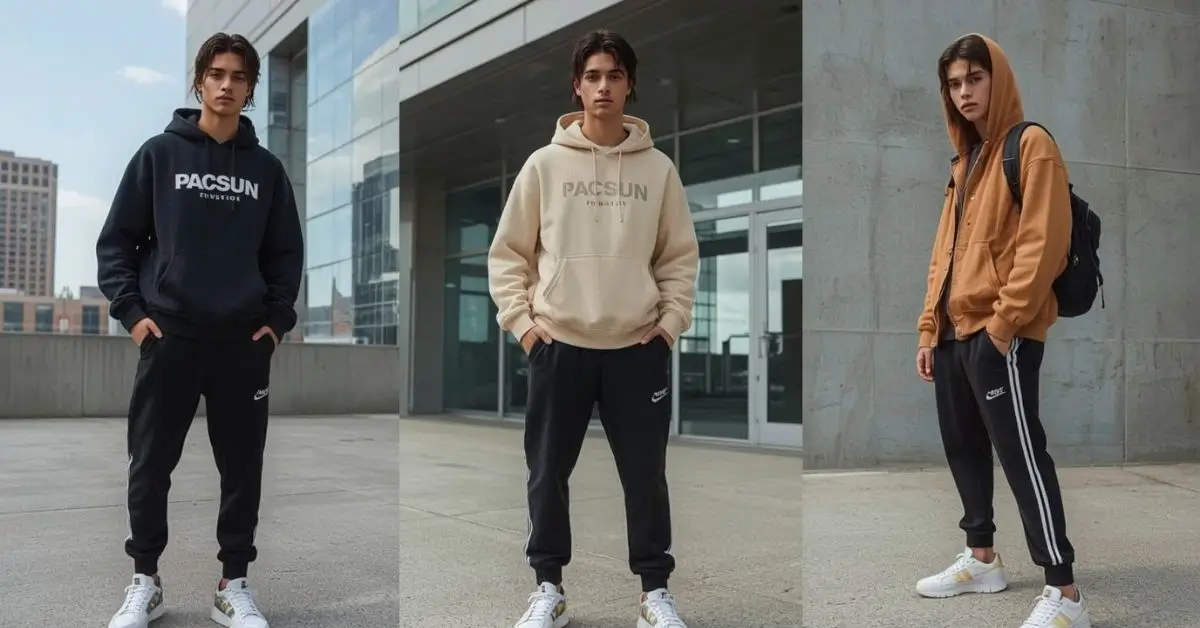
If you’re a streetwear enthusiast, sneakerhead, or Pacsun shopper, the Pacsun Fear of God collection is one of the most sought-after collaborations in modern fashion. From limited drops to stylish hoodies and pants, fans and content creators are constantly searching for the latest Fear of God Essentials at Pacsun.
This guide explores the collection, pricing, styling tips, sizing, and where to buy, helping you stay ahead in the streetwear game.
What Is the Pacsun Fear of God Collection?
Pacsun x Fear of God is a collaboration that brings premium streetwear and casual essentials to a broader audience. The collection includes:
- Hoodies and sweatshirts featuring Fear of God branding
- Essentials pants and joggers for versatile styling
- Sneakers and apparel collabs exclusive to Pacsun
- Limited edition drops that are highly coveted in the streetwear community
Expert insight: According to Highsnobiety, “Fear of God Essentials at Pacsun offers accessible luxury streetwear, merging high-end design with everyday wear.”
Key Items in the Pacsun Fear of God Collection
| Product | Features | Price Range | Styling Tips |
|---|---|---|---|
| Fear of God Essentials Hoodie | Oversized, premium cotton | $80–$120 | Pair with slim joggers or distressed jeans |
| Essentials Sweatpants | Tapered fit, soft material | $70–$110 | Match with sneakers for a casual look |
| Limited Edition Sneakers | Collaboration with top brands | $150–$300 | Complete the streetwear outfit with hoodies |
| Accessories | Hats, beanies, and T-shirts | $30–$70 | Layer with jackets or longline tees |
Where to Buy Pacsun Fear of God Essentials
- Pacsun Official Website: Always the first place for new drops.
- Pacsun Stores: Limited stock, first-come-first-serve basis.
- Resale Platforms: StockX, Grailed, and eBay for sold-out items.
Pro tip: Sign up for Pacsun email alerts to stay updated on limited edition drops.
Pacsun Fear of God Reviews: What Buyers Are Saying
- Comfort and Quality: Most users praise the soft, premium fabrics.
- Fit: Oversized hoodies and tapered pants are widely appreciated, but sizing guides are recommended.
- Value: While pricier than basic streetwear, the collection is worth it for durability and brand prestige.
Niche insight: According to HYPEBEAST, “Fear of God Essentials at Pacsun provides a perfect balance between hype and accessibility for streetwear enthusiasts.”
How to Style Pacsun Fear of God Clothing
- Layer hoodies with bomber jackets or denim jackets for a modern streetwear look.
- Pair Essentials joggers with clean, minimal sneakers for effortless style.
- Accessorize with branded hats, backpacks, or crossbody bags to complete the outfit.
Tips for content creators: Showcase before and after outfit transformations or mixing Essentials with vintage streetwear pieces for engaging social media content.
FAQ’s
Where to buy Pacsun Fear of God Essentials?
Primarily through Pacsun’s official website and stores, or via trusted resale platforms for sold-out items.
Pacsun Fear of God hoodie reviews?
Users report premium quality, soft fabrics, and comfortable oversized fits.
Fear of God Essentials at Pacsun prices?
Hoodies range from $80–$120, joggers $70–$110, and limited sneakers $150–$300.
Pacsun Fear of God collection release date?
Dates vary per drop; subscribing to Pacsun email alerts ensures you never miss a release.
Is Fear of God Essentials worth it?
Yes, for those seeking premium, durable, and stylish streetwear with high brand recognition.
How to style Pacsun Fear of God clothing?
Layer hoodies with jackets, pair joggers with clean sneakers, and accessorize for a modern streetwear look.
Fear of God Essentials sizing guide?
Hoodies are oversized, pants are tapered; always consult the official Pacsun sizing chart before purchase.
Pacsun Fear of God limited edition drop tips?
Arrive early, follow online alerts, and check resale platforms if items sell out quickly.
Conclusion
The Pacsun Fear of God collection blends accessible luxury with streetwear appeal, offering high-quality Essentials hoodies, joggers, sneakers, and accessories. Whether you’re a fashion blogger, streetwear enthusiast, or online shopper, knowing where to buy, how to style, and what reviewers say ensures you get the best from each limited-edition drop.
FASHION
Top Stylevana Best Sellers Every Skincare Beginner Needs
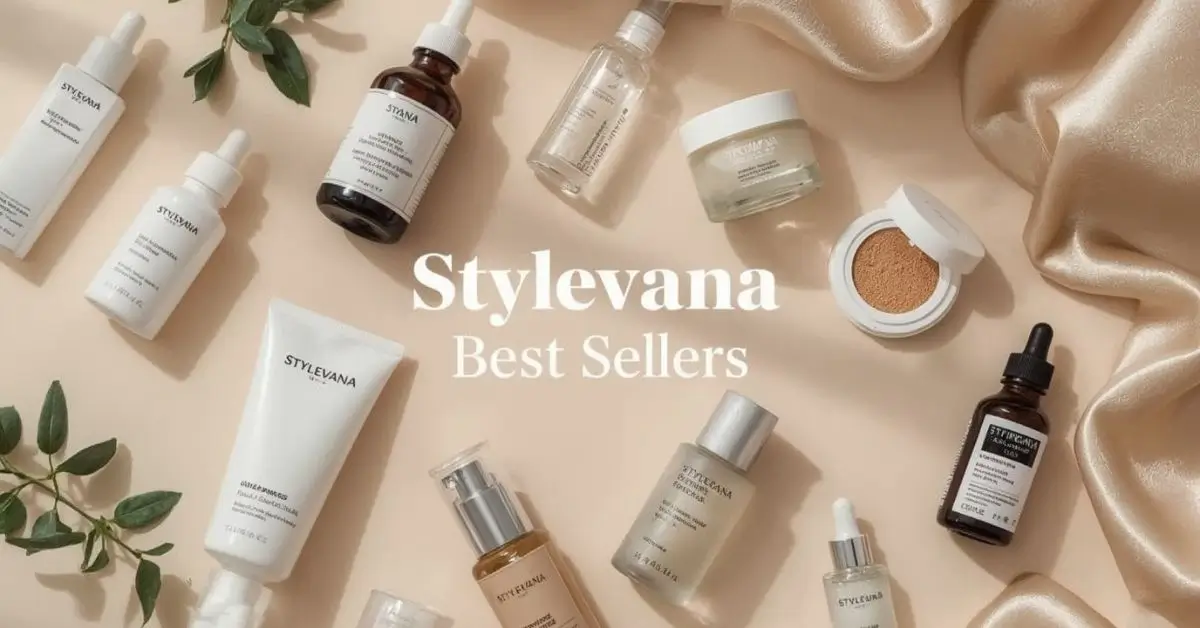
If you’ve ever scrolled through endless skincare and makeup products, unsure of what’s really worth your money, you’re not alone. Whether you’re a skincare beginner, a budget-conscious shopper, or a seasoned beauty enthusiast, Stylevana best sellers offer a shortcut to tried-and-true products that are already loved by thousands. These best sellers aren’t just popular—they’re effective, affordable, and trusted by a global beauty community.
In this guide, we’ll break down Stylevana skincare best sellers, makeup best sellers, and trending Asian beauty must-haves. You’ll learn which products deliver results, how they compare with competitors like YesStyle, and how to pick the right formula for your skin type.
What Are Stylevana Best Sellers in 2025?
Stylevana curates its best seller list based on real customer reviews, high sales, and trending beauty standards from Korea and Japan. These aren’t random picks—they represent the top-rated products that consistently deliver results.
Key categories include:
- Stylevana skincare best sellers – cleansers, toners, serums, sunscreens.
- Stylevana makeup best sellers – BB creams, lip tints, eyeliners, cushion compacts.
- Japanese skincare best sellers Stylevana – lotions, hydrating toners, and masks.
- Affordable K-beauty best sellers – budget-friendly products under $20.
Top Korean Skincare Products on Stylevana
Korean skincare remains the backbone of Stylevana’s popularity. Here are some Stylevana customer favorites:
| Product | Category | Why It’s a Best Seller | Price Range |
|---|---|---|---|
| COSRX Advanced Snail 96 Mucin Essence | Serum | Deep hydration, skin repair | $15–20 |
| Beauty of Joseon Relief Sun: Rice + Probiotics | Sunscreen | Lightweight, non-greasy | $12–16 |
| Some By Mi AHA BHA PHA 30 Days Miracle Toner | Toner | Exfoliation + acne care | $10–15 |
| Laneige Lip Sleeping Mask | Lip Care | Hydration + overnight repair | $15–20 |
Expert Reference: According to Allure Magazine’s Best of Beauty Awards (2024), products like Beauty of Joseon sunscreen are not only customer favorites but also dermatologist-approved for daily use.
Japanese Skincare Best Sellers on Stylevana
Japanese skincare is all about minimalism and hydration. Some Stylevana top-rated products include:
- Hada Labo Gokujyun Lotion – a cult classic toner packed with hyaluronic acid.
- Senka Perfect Whip Cleanser – a foaming cleanser loved for its creamy lather.
- Shiseido Senka Sunscreen – strong UV protection with a lightweight feel.
Expert Reference: Harper’s Bazaar Beauty Editors (2025) recommend Japanese formulas for their long-term skin barrier support, making them ideal for sensitive skin.
Affordable K-Beauty Best Sellers Worth the Hype
One of the biggest reasons shoppers flock to Stylevana is affordability. Many Asian beauty must-haves cost less than $20 but perform like luxury skincare.
Budget-friendly picks:
- Etude House SoonJung 2x Barrier Cream – great for sensitive skin.
- Innisfree Green Tea Seed Serum – antioxidant-rich hydration.
- Missha Time Revolution Essence – often called the affordable SK-II dupe.
Expert Reference: A 2024 Journal of Cosmetic Dermatology review noted that fermented ingredients like those in Missha essences can improve skin texture and elasticity at a fraction of luxury prices.
Stylevana Makeup Best Sellers
Stylevana isn’t just skincare—it’s also a hub for makeup best sellers that combine skincare benefits with flawless finishes.
- Rom&nd Juicy Lasting Tint – glossy lip color with staying power.
- Clio Kill Cover Cushion Foundation – full coverage yet breathable.
- Etude House Drawing Eyebrow Pencil – precise and affordable.
Trending Beauty Products Stylevana Customers Love
Each season, Stylevana highlights trending beauty products based on TikTok, YouTube reviews, and customer demand. Currently trending in 2025:
- Korean sunscreens (lighter, more comfortable formulas).
- Glass-skin serums and essences.
- Japanese minimalist skincare routines.
How to Choose the Right Stylevana Best Seller for Your Skin Type
With so many products, the biggest challenge is knowing what suits you.
- For Dry Skin: Look for snail mucin, hyaluronic acid, or ceramide-rich creams.
- For Oily/Acne-Prone Skin: Opt for AHA/BHA exfoliants or lightweight gels.
- For Sensitive Skin: Choose fragrance-free Japanese toners and soothing creams.
- For Anti-Aging: Invest in retinol alternatives, peptides, and fermented essences.
FAQs
What are Stylevana best sellers in 2025?
They are top-rated products chosen based on sales, reviews, and global beauty trends.
Which Korean skincare products are top-rated on Stylevana?
COSRX Snail Essence, Beauty of Joseon Sunscreen, and Some By Mi Miracle Toner are consistently top picks.
Are Stylevana best sellers worth the hype?
Yes. Many products are dermatologist-approved and loved by thousands of verified customers.
What is the most popular Stylevana sunscreen?
Currently, Beauty of Joseon Relief Sun is the No.1 Stylevana sunscreen in 2025.
Stylevana best seller review for sensitive skin?
The Etude House SoonJung line is a standout for sensitive and irritated skin.
Are Stylevana best sellers cheaper than YesStyle?
In most cases, yes—Stylevana often has lower prices and frequent promotions.
Conclusion
If you’re new to Asian skincare or simply want to shop smarter, starting with Stylevana best sellers ensures you get proven, top-rated products without overspending. From best Korean sunscreens Stylevana to Japanese skincare favorites, these picks are more than just hype—they’re the backbone of effective, affordable routines in 2025.
ENTERTAINMENT
What Is 925 Silver? Meaning, Value, and Jewelry Guide
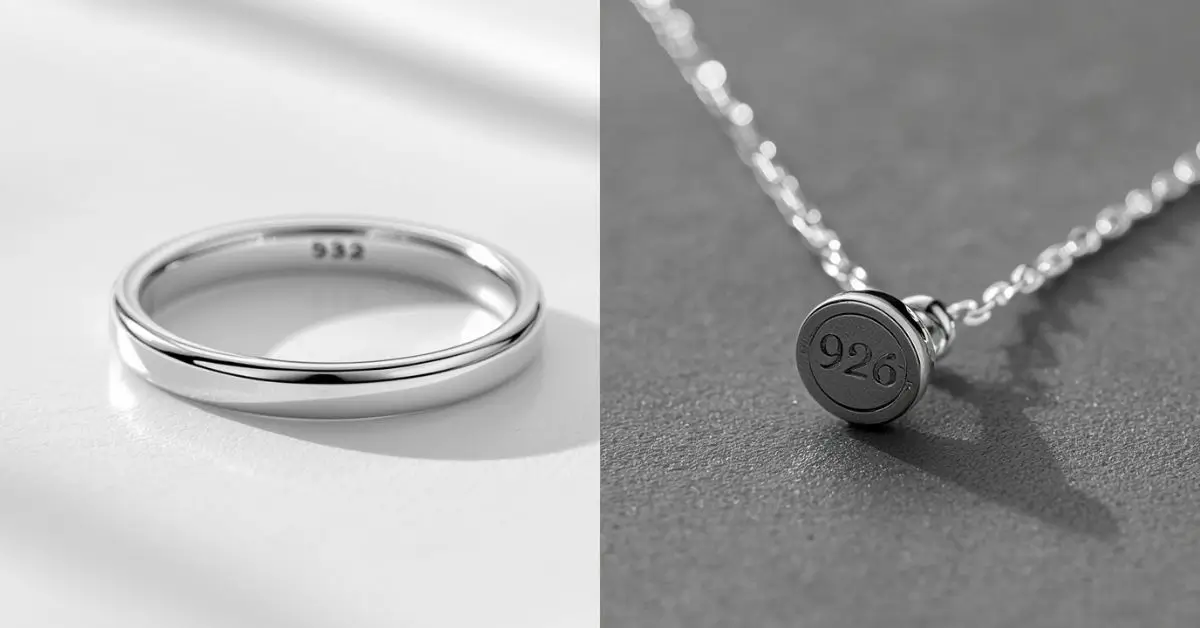
If you have ever turned over a ring or necklace and noticed the number 925 stamped on it, you might have wondered: what is 925 silver? For jewelry buyers, fashion lovers, or even curious students, this number holds important meaning. It tells you about the metal composition, authenticity, and quality of the piece. Understanding 925 silver helps you shop smarter, care for your jewelry properly, and even assess resale value.
What Is 925 Silver and Is It Real?
The term 925 silver refers to sterling silver, an alloy made of 92.5% pure silver and 7.5% other metals, usually copper. Pure silver, also called 999 silver, is too soft for everyday wear, so jewelers mix it with copper to create durability.
- 925 sterling silver meaning: Jewelry labeled with 925 is genuine sterling silver.
- Is 925 silver real silver? Yes—it contains real silver, just not in pure form.
Key takeaway: If your jewelry has a 925 hallmark, it’s authentic sterling silver.
Why Does Jewelry Have 925 Stamped on It?
The 925 hallmark on jewelry is a universal standard indicating the silver’s purity. Just like gold is stamped with 14k, 18k, or 22k, silver jewelry uses 925 to signal sterling quality.
Some common hallmark placements include:
- Inside ring bands
- On the clasp of necklaces and bracelets
- On the back of pendants or earrings
This ensures buyers know they are getting genuine sterling silver rather than plated or imitation pieces.
925 Silver vs Pure Silver: Key Differences
| Feature | 925 Sterling Silver | 999 Pure Silver |
|---|---|---|
| Composition | 92.5% silver + 7.5% copper | 99.9% silver |
| Durability | Strong, resistant to bending | Very soft, scratches easily |
| Jewelry use | Rings, necklaces, daily wear | Coins, collectibles |
| Price | Affordable & popular | Higher, limited use |
925 silver vs 999 silver: If you want wearable jewelry, 925 is better. For collectors, pure silver may be preferable.
Is 925 Silver Worth Anything?
Yes, 925 silver jewelry has value. Its worth depends on:
- Weight of the piece (per gram of silver content)
- Current silver market price (tracked daily, e.g., Kitco or LBMA)
- Craftsmanship & design
On average, 925 silver price per gram is slightly below pure silver, but jewelry can sell for much more due to design and brand value.
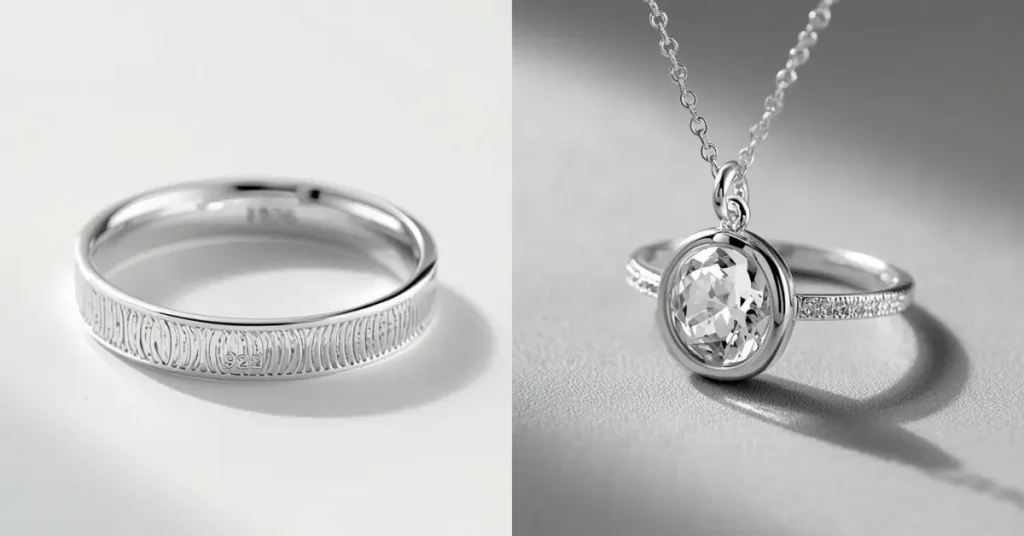
Does 925 Silver Tarnish or Turn Green?
One common question is whether 925 silver tarnishes. The answer is yes, but it’s normal. The copper in sterling silver reacts with oxygen, moisture, or skin oils, creating a dark patina.
- It does not mean your jewelry is fake.
- Tarnish can be cleaned easily at home.
Sometimes, 925 silver may leave a greenish tint on skin. This is caused by copper, not harmful, and can be reduced with proper care.
How to Clean and Care for 925 Silver Jewelry
Sterling silver care and cleaning tips:
- Use a silver polishing cloth regularly
- Store in airtight bags to prevent oxidation
- Avoid wearing in chlorinated pools or saltwater
- DIY cleaning: mix baking soda + water paste for gentle cleaning
By maintaining your jewelry, you preserve both shine and resale value.
Is 925 Silver Hypoallergenic?
For most people, 925 silver is hypoallergenic, making it safe for sensitive skin. However, if nickel is used in the alloy (rare but possible in cheap pieces), it may cause irritation. Always buy from reputable jewelers to ensure nickel-free silver.
925 Silver Jewelry Value and Uses
925 silver is widely used in:
- Rings & engagement bands (durable and stylish)
- Necklaces & pendants (affordable luxury)
- Earrings & bracelets
- Men’s accessories (cufflinks, chains, watches)
Its durability + beauty + value make it one of the most popular metals in jewelry making.
How to Spot Fake vs Real 925 Silver
To avoid scams, here are quick tests:
- Look for the 925 hallmark
- Perform a magnet test (real silver is non-magnetic)
- Rub with a soft cloth (fake silver may show discoloration)
- Buy from trusted jewelers with certifications
Conclusion
Now you know exactly what 925 silver is, why it’s valuable, and how to care for it. Whether you’re a jewelry buyer, collector, or researcher, understanding 925 silver helps you recognize authenticity, protect your investment, and enjoy your pieces for years to come.
FAQ’s
What is 925 silver and is it real?
Yes, 925 silver is real sterling silver with 92.5% pure silver content.
Why does jewelry have 925 stamped on it?
It shows the purity level, guaranteeing it’s sterling silver.
Is 925 silver worth anything?
Yes, its value depends on weight, design, and silver prices.
Does 925 silver tarnish or turn green?
It can tarnish due to copper, but cleaning restores shine.
Can you shower or swim with 925 silver jewelry?
Not recommended—chlorine and saltwater accelerate tarnishing.
Is 925 silver good for engagement rings?
Yes, it’s durable, affordable, and beautiful—great for daily wear.
-
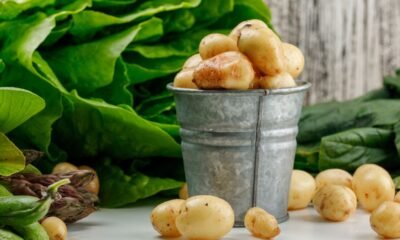
 HEALTH5 months ago
HEALTH5 months agoGold Potato Calories: What’s Really on Your Plate?
-

 TECH4 months ago
TECH4 months agoSmart Tools for Special Education Success
-
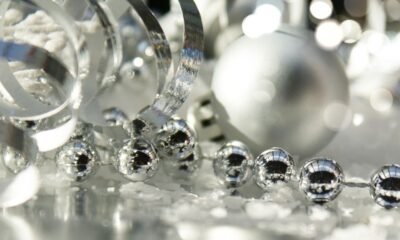
 FASHION5 months ago
FASHION5 months agoShine On: Clean Silver Naturally
-

 ENTERTAINMENT5 months ago
ENTERTAINMENT5 months agoDancing Drops: A Fountain’s Charm
-

 ENTERTAINMENT5 months ago
ENTERTAINMENT5 months agoMatchday Spotlight: Today’s Must-Watch Football Showdowns
-

 BUSINESS5 months ago
BUSINESS5 months agoTower Loan Uncovered: What You Need to Know Before You Borrow
-

 BUSINESS5 months ago
BUSINESS5 months agoBeyond the Poké Ball: Inside Pokémon Center Japan
-

 ENTERTAINMENT5 months ago
ENTERTAINMENT5 months agoPanem Reignited: A New Chapter in the Hunger Games Saga
